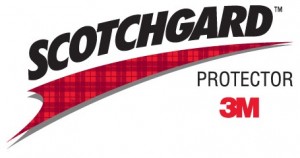The question: I need help with the technical aspects of applying Scotchgard. Can you help?
Bill’s answer: Use the right drying equipment and all is solved. Scotchgard is a proven solution and worth the effort.

Hi Bill and Steve,
I have been cleaning carpets for 16 years now and something I have noticed with the application of a carpet protector is that if you use the Powerforce injection sprayer it leaves the carpets very wet. (This happens to me even if I turn the machine psi down to 100 psi.) I love the kick-in-the-pants protector gives my profits. But even so I have three questions:
1. Now if I use fans to dry the protector quicker I start blowing dust around that settles on the carpet. So does this dust bond with the protector?
2. Also if a powdered cleaning agent is used, many times these cleaning products will revert back to a powder after they dry. Now normally the vacuuming after the carpets are dry will remove most of this powder residue. However, if a protector is applied while carpets are still wet, will we still be able to remove the powder with a vacuum or will the protector bond to the powder and seal it in?
3. I guess I really do not understand the real uses of a protector and what it can and can not do. Any information or advise would be great. How do carpet protectors work?
You can never have too much information and I really enjoy learning new ideas and techniques. Thank you for your time and patience.
Puzzled in Omaha
Bill: Wow that is a lot of questions in one email. But I will try to answer these and do so before my partner in crime, Steve Toburen, butts in with his snarky and sometimes unreliable technical analysis!
Here is the deal, Puzzled. All protectors are designed to coat the fiber so that anything that has a higher dynes such as water will not be able to penetrate. “Dynes” are just a unit of measure that determines the size of a molecule. A fluorochemical has a low dyne number while water or oil has a high number. (Think of a sieve that lets BBs through but won’t let marbles through.)
Longer protector drying time will always be an issue due to the dilution rate of 1-4 with waterbased protector meaning that if you spray a diluted gallon of Scotchgard 80% will be water that is not extracted. To alleviate the wetting issue you could use a solvent based protector (Matrix Fiber Guard) but I think the odor problems with those is worse than the wetting issue. Using a fan such as a DriEaz AirPath keeps the air more on the surface rather than disturbing the dust on tops of furniture. If that dust could mix with the protector is a point I cannot answer with any certainty.
Steve: Big Billy not sure about a technical question? Now that is one for the record books!
Bill: I AM sure some dust does mix with the uncured protector but it will be walked off over time. As for the dirt still remaining on the primary that should still vacuum up because the protector covers the fiber surface not the backing.
Steve: Puzzled, I gotta say in 20 years in business my company sprayed down 1,000’s of gallons of Scotchgard and I NEVER had one customer complain or even mention your concerns listed above. So Puzzled, how can I tactfully say that there is a thin line between sincere interest in improving your technical prowess (which is good) and being a seriously obsessive-compulsive personality! (Which is bad and a non-productive activity!)
Bill: Since when have you ever been “tactful”, Steve? Seriously, Puzzled, overall the benefits of a protector far outweigh your potential concerns. Thanks for the questions. This proves you have your customer’s best interest at heart and you are to be commended.

Bill, Steve and Puzzled,
A couple of thoughts concerning some of Puzzled’s questions. First and foremost, while you “can” apply scotchguard with a powerforce, your truckmount pump may not be very reliable at lower pressures so while it may read 100 psi, you could still have 2 or 3 hundred psi at your powerforce. May I suggest using a pump up or electric Multisprayer for Scotchgard applications.
As to your question about dust, Scotchgard is designed to dry rather quickly. Combined with lower pressure applications and having dust issues should be alleviated. However, if you constantly have a problem with dust, try educating your customers about dusting prior to your visit or make a quick dusting part of your cleaning routine and price accordingly. You’ll create a very positive moment of truth with your customer and you wont’ have to worry about your drying fans creating issues.
And some thoughts concerning your powdered cleaners. I’m making a guess that you are referring to powdered detergents. Ideally Scotchgard should be applied following an acidic rinse that removes the detergent residues. In situations were you feel you need an alkaline rinseing agent, try post spraying an acid rinse or run it through your truck for a final rinse and do several dry passes to prepare the fiber for an application of protector. We have also had good success in using oxygen releasing rinse agents like Pro’s Choice Oxygen Release (http://www.jondon.com/pro-s-choice-oxygen-release-emulsifier-2.html) followed by an application of protector with out any issues.
David,
We are always thrilled to read your well-thought out posts. Few in our industry can match your interest in searching out the best products and processes.
Thanks again,
Bill Yeadon
Rumor has it that some solvent based protectors can cause warranty issues….be careful.
My customers don’t have those exact concerns, but I am frequently asked if the Scotchgard will lock in any “stains.”
Dan
Raleigh NC Carpet Cleaning
That’s great, Dan, when they ask questions. Sales Rule #1 is every objection is just a customer looking for a reason to buy!
Steve